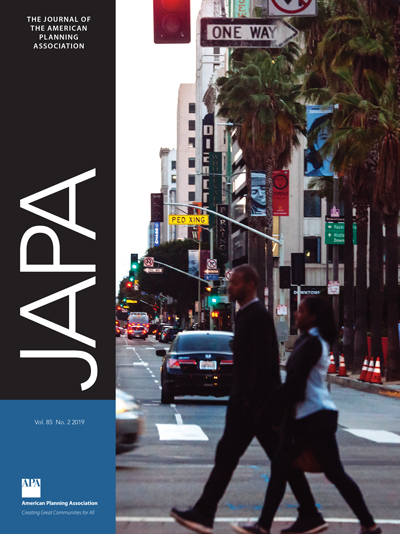Planning May 2020
JAPA Articles of the Year
JAPA Article of the Year
"Who Cares? Arnstein's Ladder, the Emotional Paradox of Public Engagement, and (Re)imagining Planning as Caring" by Ward Lyles, AICP, and Stacey Swearingen White; JAPA Vol. 85, No. 3.

Every year, the associate editors of the Journal of the American Planning Association select the best paper published in the previous year. In this year's winning article, "Who Cares? Arnstein's Ladder, the Emotional Paradox of Public Engagement, and (Re)imagining Planning as Caring," JAPA Volume 85, Issue 3, authors Ward Lyles and Stacey Swearingen White of the University of Kansas address a common but not much researched area of planning: emotions.
Lyles and White point to an "emotional paradox of planning" that occurs because planners' "emotions often motivate us to plan so that all people in our communities can flourish rather than suffer, but our instincts, reinforced by our education, training, and professional norms, may lead us to try to control or avoid emotions altogether in the actual work of planning."
The authors draw on research from planning, psychology, and neuroscience to propose how planners can better integrate emotions in their work. They write: "Planners should reflect deeply on how they engage emotions in their work and how their approach constrains and enables their effectiveness. Deepening emotional, social, and cultural intelligence holds considerable potential for meeting our field's aspirational goals of fostering more compassionate and inclusive communities."
This article has broad relevance to the field of planning and is adept at drawing out the practical implications of research. For more, see the blog post "Who Cares?" and Planning article "Planning's Emotional Paradox."
JAPA Best Article by an Early Career Scholar
"Redefining Car Access: Ride-Hail Travel and Use in Los Angeles" by Anne Brown; JAPA Vol. 85, No. 2.

This marks JAPA's third year of recognizing a paper by an emerging scholar. This year's award goes to Anne Brown of the University of Oregon.
Drawing on data from 6.3 million Lyft rides in the Los Angeles area, Brown examines the connections between ride-hail travel, neighborhoods, and socioeconomics. Brown finds "ride-hail use is remarkably widespread across core urban, suburban, and even rural neighborhoods and that people living in low-income neighborhoods — far from being excluded from the service — use ride-hailing more frequently than other travelers do when all else is equal."
This has many implications for practice. Brown notes that "planners should anticipate ride-hailing not just in urban centers but across a wide array of built environments ... [and] ride hailing can provide new modal options where parking is already constrained or where new parking restrictions are introduced."
Those without smartphones or bank accounts, however, risk being left behind.
This article is a very interesting example of using big data to answer an important question about a new phenomenon.
For more about this article see the blog post "Ride Hailing Could Boost Mobility Beyond Rich, Urban Areas."
Resources
To subscribe to JAPA and read these articles, go to planning.org/japa.
—Ann Forsyth, PhD, is JAPA's editor.


